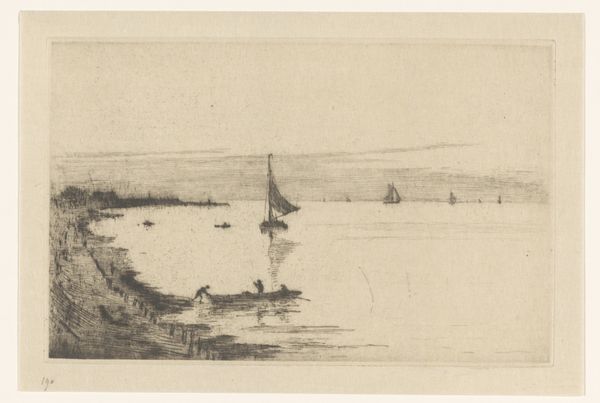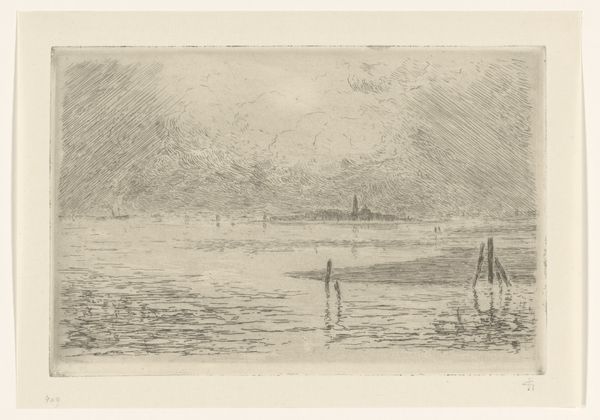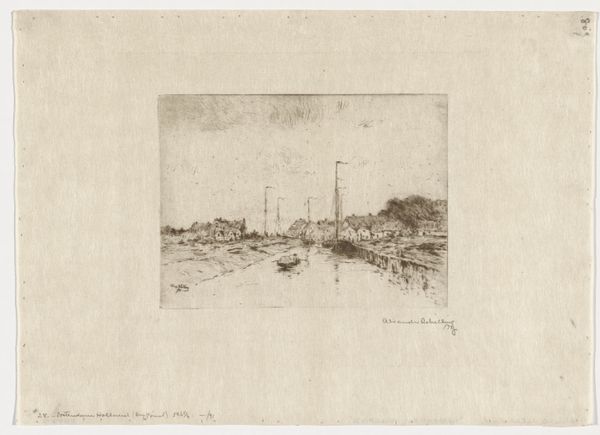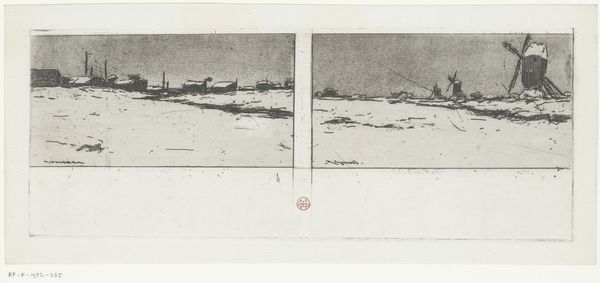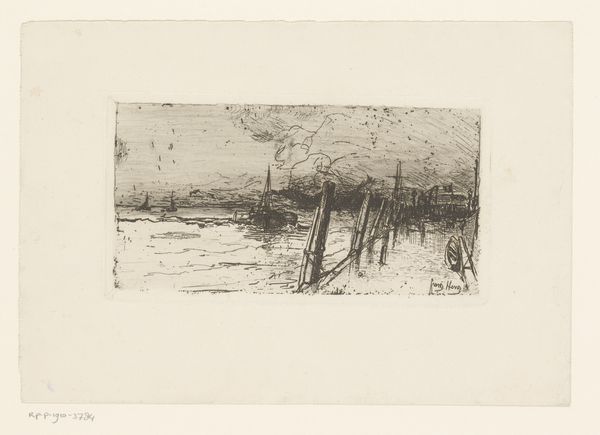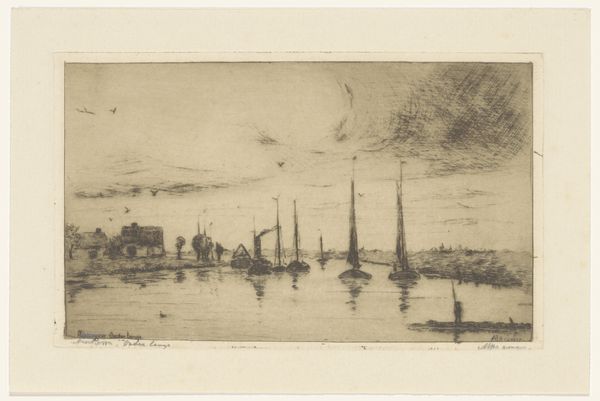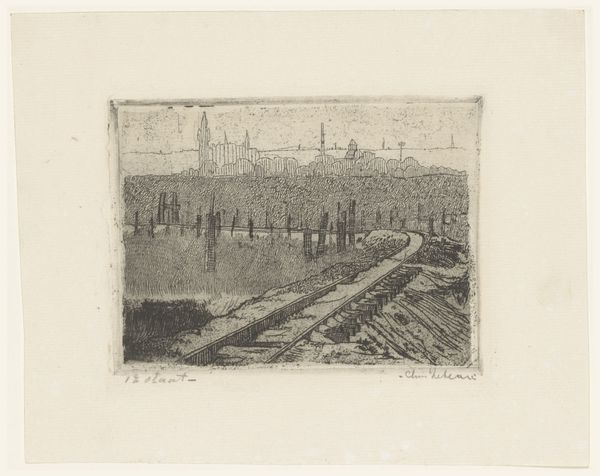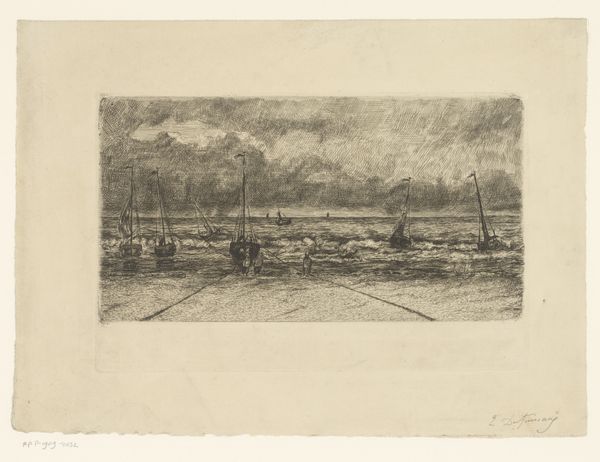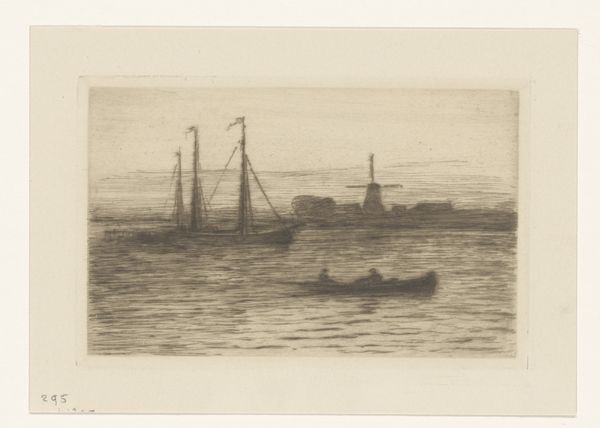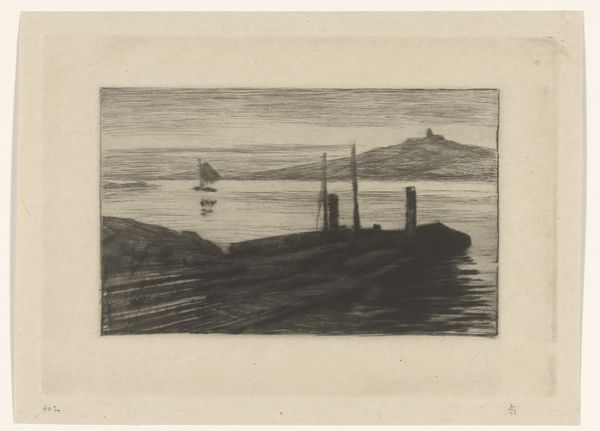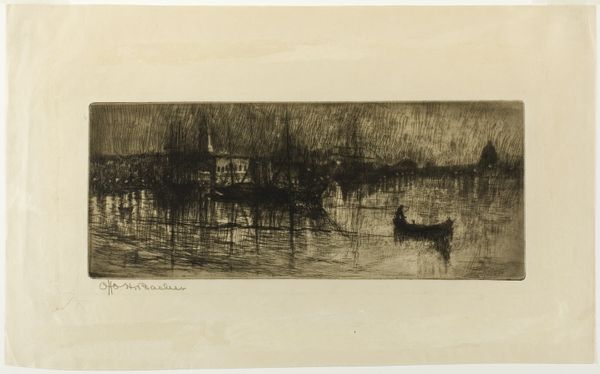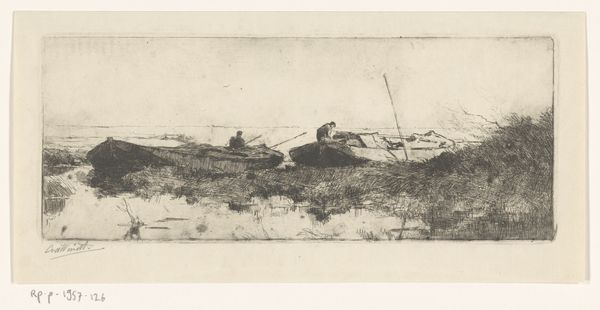
print, etching
# print
#
etching
#
landscape
#
realism
Dimensions: height 150 mm, width 260 mm
Copyright: Rijks Museum: Open Domain
Editor: This etching, “Sleepboot op de Maas” or “Tugboat on the Meuse”, was created in 1884 by Carel Nicolaas Storm van 's-Gravesande. The tonal range feels really subtle, almost muted. I’m curious, what stands out to you about this particular piece? Curator: I'm immediately drawn to how this work captures the shifting landscape of labor in the late 19th century. Etchings like this document the rise of industrial maritime technology—specifically the tugboat—as a challenge and potential replacement for older sailing methods and human labor. Look closely: what power dynamics do you observe within the scene? Editor: Well, you've got both tugboats *and* a sailing ship in the background. Was van 's-Gravesande perhaps highlighting this moment of transition? The older way of doing things, alongside this new industrialized method? Curator: Exactly! The inclusion of the older sailing ship isn't just aesthetic; it's a commentary on obsolescence and labor precarity. Think about who would have operated these vessels, how their livelihoods were being reshaped by these advancements. The seemingly calm scene carries the weight of profound societal shifts. Does knowing that change your understanding of the work? Editor: Absolutely, it makes it more complex. I had initially focused on the tranquility, but I see it as a working scene that tells a story. The smokestacks, especially, stand out as symbols of the changing times. Curator: Precisely! It reminds us that art is not just about aesthetics, but about bearing witness to social and economic transformations and their impact on individual lives and entire communities. Editor: I didn't expect to consider this landscape in terms of labor history and class dynamics. Thanks!
Comments
No comments
Be the first to comment and join the conversation on the ultimate creative platform.

